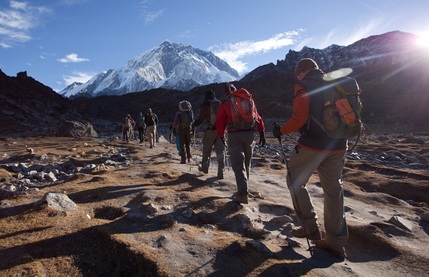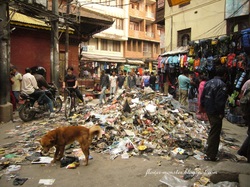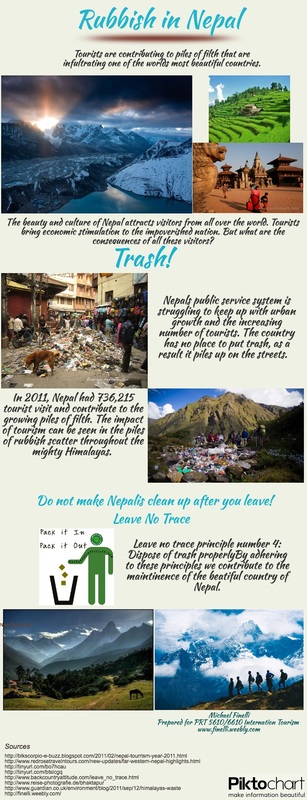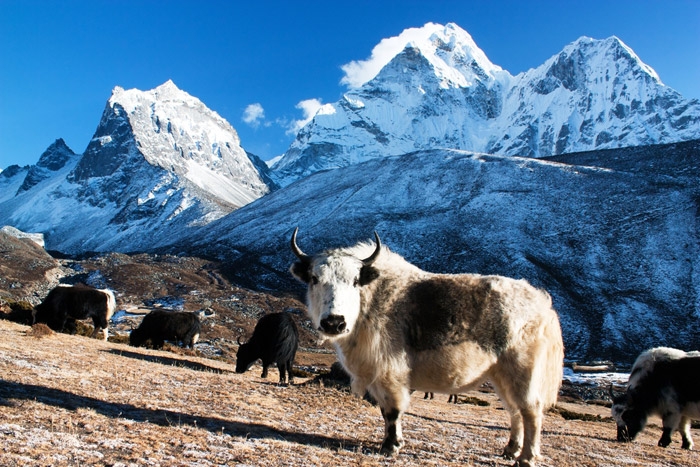 In todays post, I want to talk about some of the important things I have taken away from my International Tourism class at the University of Utah.
As I mentioned in the introduction, I became interested in sustainable tourism a few years ago when I traveled to Nepal and a few other nations. At the time of my travels, I lacked knowledge on sustainable/responsible tourism. After this class, I now have a deep understanding of the many facets of sustainable tourism. Through learning about the various effects of tourism, we came to understand the role we play in the environments we chose to travel to. One of the most powerful messages was learning how our financial decisions contribute to the environment. We learned that each time you make a purchase you also make a vote. Being a conscientious spender helps ensure that our spending money is reinforcing behaviors that benefit the environment we are in. We talked about buying goods and services that support local economies with minimal leakages to other nations. Our knowledge of buying power was enhanced through the lessons on ecotourism and fair trade. In these lessons we were instructed to find examples of tourism providers that uphold these principles. In doing so, we gained the ability to determine whether or not a company deserves your business based on the issues of ecotourism and fair trade. Through these lessons, we gained an understanding that we, as the tourists, can have a major influence on the places we choose to travel to.
Another component to this class was the lessons in writing and communication. A theme for the class was understanding the importance of sharing information through social media. By doing this our influence can branch out and possibly reach thousands. Therefore, the ability to communicate your message becomes critical. In the class we learned about writing with different styles of voice, and we learned about making adjustments for different audiences. I appreciate the fact we were encouraged to write in an easy to understand conversational tone, rather than a flashy and somewhat abstract tone that is encouraged in many college classes. We advanced our writing through blog assignments and vocab/grammar quizes. All the while it remained important to use social media to share messages. This class has helped me develop my understanding of tourism, and it has helped teach me to share that information with others.
 Often times I walk into my kitchen and I am both amazed and horrified at the pile of dishes that have accumulated in my kitchen sink. How can a single man, living alone, accumulate so much filth over the course of just one day? Then I think back to my day of eating when several times I made small contributions to the pile. Each plate or fork seems insignificant, but eventually contributes to something overwhelming. In an odd way, tourism and the environment work in the same way. It is easy to minimize your own actions by the logic that one person cannot have to big an impact on the environment. But we are contributors, and every time we do something leaving an aversive impact, we are piling on in the same way we pile up dishes in the sink. It is important we take ownership and appreciate the impact that we have on the environment. Furthermore, we must understand the principle of bandwagoning. Bandwagoning is the tendency of people to fall inline with what they believe others are doing. This is powerful when it coms to tourism. When you act as a responsible traveler, you are not only doing your part in maintaining environments, but you influence others to do the same. It is for this reason that we must understand how to be a responsible tourist, and how to influence others to do the same. The first step towards this goal is to learn how to be a responsible traveler; the second is to learn to spread the word. A great way to achieve this is to take part in the Green Hotels and Responsible Tourism Initiative. This initiative involves educating people on the components of responsible tourism and sharing the information with others. The first step is to read through the Responsible Travelers Guide, a comprehensive breakdown on the effects of tourism and how we can best influence the environment. The second step is to share the information. This is the real power of this simple initiative. By sharing the information with friends, family, and fellow travelers, we can create a cascading effect that could potentially reach thousands. They promote the use of social media (Facebook, Twitter, etc) for spreading the initiative. Travelers can be most effective by sharing the initiative where they post pictures, and stories about travel experiences. Be proactive and tag friends you met during your travels, and encourage them to pass it along. You want to convey to others that caring for the places you traveled enriched your experience, and is something they should consider as well. The tips learned in the Responsible Traveler Guide are important for all travel destinations, but can be particularly beneficial in fragile locations like Nepal. As the number of tourists visiting Nepal continues to rise, it is imperative travelers become informed on the impact of their visit. Use the Guide to ensure your impact is positive, and be vocal in sharing it with others. By taking part in this initiative, your efforts to be a responsible traveler can reach thousands and make a significant impact on the environment.

These guys are stoked you've decided to be a responsible traveler.
 Todays post will be focused on UNESCO World Heritage Sites. A World Heritage Site is a place that is selected by UNESCO because it holds special cultural or physical significance. These sites are expected to maintain authenticity and bring on education of ancient culture to travelers. There are 5 characteristics common among UNESCO sites: They collaborate, find the fit between the community and tourism, make sites and programs come alive, focus on authenticity and quality, and they preserve and protect resources. 962 listed properties are listed on the UNESCO World Heritage List, but 39 of these sites are given the distinction of being “ In Danger” because they do not follow all of the characteristics. In todays post I want to highlight two UNESCO World Heritage Sites: Cultural Landscapes and Archeological Remains of the Bamiyan Valley from the in danger list, and the Sagarmatha National Park in Nepal from the regular list. Cultural Landscapes and Archeological Remains of the Bamiyan Valley was selected by UNESCO in 2003 because of its representation of the cultural, religious, and artistic developments of the Ancient Bakhtria. Many religiously influenced archeological remains are present in the Valley. The most prominent religious influence is from Buddhism, which spilled over from India with the emergence of the Silk Road. The most famous remains at the side were two giant Buda’s (55m and 38m) tall that were carved into the sandstone cliffs. Unfortunately, the Taliban tragically destroyed these magnificent sculptures in 2001. This site is unique in terms of UNESCO classification because it was listed as a World Heritage Site in Danger at the same time it was listed as a World Heritage Site. The primary reason for its “in danger” classification is safety concerns over undetonated landmines and a lack of conservation effort from those in the area. One characteristic this site is violating is collaboration because in 2003 the area was void of any efforts to unite people in preserving the archeological remains. Another characteristic that UNESCO worried it would violate was protection of natural resources. But with careful demining projects that work to limit damage on the land and a new focus on conservation, UNESCO is close to taking off the “in danger” classification it initially given. Sagaramatha National Park in Nepal is an exemplary example of a site worthy of its UNESCO World Heritage tittle. The park features striking beauty from high mountains, glaciers, and Sherpa culture. The park is home to the worlds highest mountain Mt Sagarmatha (Everest), as well as seven other peaks above 8,000 meters tall. This park was recognized by UNESCO because of its careful preservation of it geology. The park takes steps to limit visitors to the area, educate visitors on Sherpa culture, and have place restrictions on hunting due to the endangered species in the area. Other areas of Nepal need to follow the example the park has set for establishing a sustainable tourism environment.
 This weeks post will continue on the theme of being a wise consumer. This time we will focus on an organization that contributes to fair trade. Your adventure trip of a lifetime to Nepal will likely include more than just memories from high altitude adrenaline packed excitement. It will include memories of culture and chaos experienced in city stops along the way. Urban centers around Nepal are packed with small stores selling authentic arts and crafts from local artisans. Many tourists will want to purchase some of these items as souvenirs or gifts. Unfortunately, the chaotic haggling experience can intimidate travelers as they leave the country without all the souvenirs they desired. Fortunately, there is a way you can purchase these items outside of the country while still ensuring your money reaches the hands of local artisans. The Association for Crafts Producers (ACP) Nepal is a non-profit fair trade organization that employs local Nepali artisans and sells their products internationally on the Internet. This organization contributes to the local economy and fair trade by abiding by the five cornerstones of fair trade. · Fair Working Conditions: Working as a non-profit the ACP ensures that a large percentage of the profits earned is put back into the pockets of the artisans and local communities. · Fair Prices: Although the prices will not be as cheap as purchasing items in Nepal, they keep the prices as low as possible given the overhead of paying artisans and shipping all over the world. · Integration into the Local Economy and Local Resources: The ACP is a major employer of local artisans. They now employ over 1200 artisans and 60 staff members. This is a major stimulation to local economies as all these people would be out of work without the ACP · Fair Trade Partnership Between All Actors Involved: They create a benefit for both consumer and producer by providing crafts at an affordable cost and giving the majority of the profits to the producers. · Sustainable Resource Use and Environmental Justice: To preserve the environment, the ACP makes sure the artisans are using tools and resources that are environmentally friendly. They do not use plastic bag, have shifted to water based pigments for printing, substituted acetic acid with hydrochloric acid in dyeing. The Fair Trade Group Nepal and the World Fair Trade Organization recognize the ACP. Remember that your tourist’s dollars have a voice. Invest in fair trade organizations like the ACP to ensure your money is contributing to local economies and is not harming the environment.
 The purchasing power tourists can be highly influential to the practices of sellers. Locals of third world countries will partake in environmentally damaging behaviors if tourists are willing to pay for it. Therefore one of the best ways we can influence impacts on the environment is by being conscientious consumers. Fortunately, tourists are starting to recognize their power as consumers, and tour companies are trying to tap into this market by advertising “eco-friendly” tours. However, many of these companies are advertising themselves as “eco-friendly”, but are doing little to contribute to environments and local communities. This is why it is critical for the consumer to be educated in ecotourism and be able to identify companies that abide by its principals. So what is ecotourism? Ecotourism is defined as: · “Responsible travel to natural areas that conserves the environment and the well being of local people” I have identified a tour company called Eco Trek Nepal that seems committed to this idea of ecotourism. They provide guided tours around Nepal focusing on trekking throughout the Himalayas. They offer tours to the most popular regions of the country but specialize in tours that get people to more remote regions. I have identified them because they abide by two of the main fundamentals of ecotourism: 1. It should provide long-term benefits -to the resource, to the local community, and to industry (benefits may be conservation, scientific, social, cultural, or economic) (Wight, 1993). 2. It should involve education among all parties-local communities, government, non-government organizations, industry, and tourists (Wight, 1993). The company adheres to these principles in a number of ways. They provide benefits to the resource by adhering to leave no trace trekking principals. One of the main problems facing Nepal is the disposal of plastic water bottles used by tourists. Eco Trek Nepal uses water purification systems and reusable water bottles so they do not contribute to this build up of waste. Another issue: Is deforestation to produce firewood to heat trekking lodges. Eco Tours brings in their own fuel source for heating so they do not have to rely on a limited supply of firewood. Additionally, they contribute to maintaining environments and cultures by getting “off the beaten path”, thus preserving more highly trafficked regions. By hiring local guides, cooks, and porters they contribute economically to local communities. Having a company that is reveals the natural and cultural wonders of Nepal, while making efforts towards sustainable tourism is a major benefit to the tourist industry of Nepal. Education is another component to this company that contributes to ecotourism. Their website contains a wealth of knowledge on how to be a responsible traveler. Hiring experienced local guides educates tourists on local customs and culture. One of the main contributions they make to the community is by investing a portion of their profits in educating children on how to sustainably build communities and contribute to health and sanitation. As consumers, we hold the power to influence the practices of tour companies. By purchasing tours through eco-friendly companies like Eco Tours Nepal, we encourage other companies to fall inline. Make sure you are educated on the practices of a company before you book a tour. Money talks, make sure your money is sending the right message.
 Nepal’s ecosystem faces many challenges as it attempts to accommodate rapid changes of the 21st century. These challenges are brought on largely by climate change and an increasing number of tourists to both urban and rural areas. Pollution is a major problem in urban centers as they struggle to accommodate both tourists and the increasing movement of Nepali’s from rural areas into the cities. The cities lack infrastructure for removal of garbage causes major issues, as you can see trash piled up on street corners and roadside banks surrounding the city. Rural areas also struggle to adapt as tourists flood the villages scattered throughout the Himalayan Mountains. These ancient villages have been forced to change rapidly since 1969 when the Nepali government opened its doors to independent travelers. The tourist industry has provided economic stimulation to villages along popular hiking trails, but it has also forced them to adapt in ways that threaten the ecosystem. Firewood for tourists has contributed to deforestation, and an increase demand for foodstuff contributes to soil erosion as farmers are forced to clear more land for crops. Prior to the tourist boom, these ancient villages existed for generations with relatively unchanging variables of supply and demand. As a result, the local farmers lack knowledge of sustainable agriculture when it comes to producing crops for a significantly larger amount of people. The Nepali government has recently begun to recognize the burdens tourism places on its ecosystem and has placed regulations on tourism in its most vulnerable areas. Though a step in the right direction, this regulation can only slow the degradation of its ecosystem. Tourists can make a major impact on the rate of degradation by acting in ways that minimize burdens placed on the environment. My blog will show tourists the many ways they can help preserve the wonderful and fragile ecosystem of Nepal.
|









 RSS Feed
RSS Feed